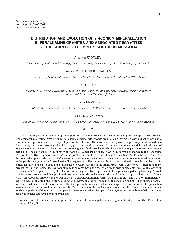摘要
The western part of the Khan Bogd complex, in the south Gobi desert, southern Mongolia, comprises (in order of emplacement): microcline-phyric granite, peralkaline aegirine-arfvedsonite granite (main intrusive phase) and aplite-pegmatite veins confined predominantly to the apical parts of the intrusion. These rocks are interpreted to represent products of extreme fractional crystallization involving alkali feldspar, quartz and, to a lesser extent, ferromagnesian silicates and, in the final stages of magma evolution, release of a silica-saturated orthomagmatic fluid. Geochemically, this evolutionary path involved an increase in peralkalinity index (from 1.0 in the porphyritic granite to 1.3 in the main phase to 2.5 in the pegmatite) and whole-rock Zr content (864 to 1130 to 16900 ppm, respectively). In the porphyritic granite, zircon with a low Hf content (Zr/Hf in the range 55-75) is the principal Zr phase, whereas alkali-Ca zirconosilicate minerals are characteristically absent. Zirconium mineral parageneses in the peralkaline granites and associated aplite-pegmatite bodies are texturally and compositionally complex products of Zr enrichment during the differentiation of magma, followed by reaction of the granitic rocks with a calcic CO(2)-F-rich fluid. In the peralkaline unit and pegmatites, Ca-poor elpidite is an early magmatic host of Zr, along with appreciable levels of the rare-earth elements (n x 10(3) ppm REE + Y). The hydrothermal stage involved replacement of the primary elpidite by late-stage Ca-rich elpidite or armstrongite, and then precipitation of minor gittinsite and abundant zircon. With the exception of zircon [(La/Yb)(CN) approximate to 0.1], all secondary zirconosilicates exhibit relative enrichment in light REE [(La/Yb)(CN) in the range 0.3-5.0]. Enrichment of the light REE in the fluid due to the sequestration of heavy REE in zircon led to the deposition of light-REE fluorocarbonates associated with calcite and minor fluorite. The fluid probably separated at the final stages of the evolution of the peralkaline granitic magma, but a crustal input, indicated by Ca enrichment of the fluid, cannot be ruled out. The observed variations in the modal composition of the secondary paragenesis can be explained by changes in fluid regime, and the activity of silica and other dissolved species during the hydrothermal stage.
- 出版日期2011-8
- 单位北京大学
